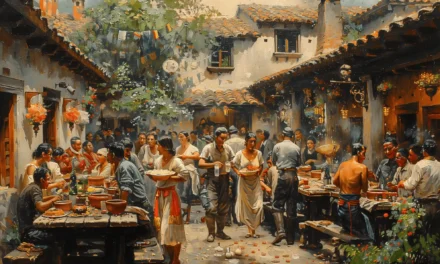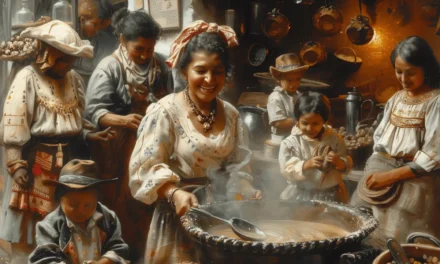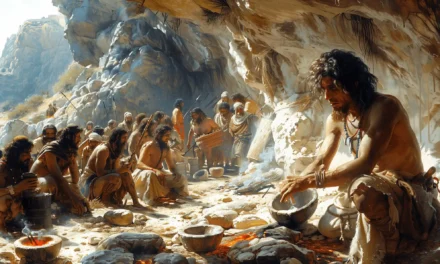Magical Properties of Sweetness: The Discovery of Sugarcane
It’s almost as if sugarcane were a well-traveled explorer! It originated in New Guinea in the South Pacific, then during prehistory, settled in Asia courtesy of some migrations. Then in 500 B.C., it was whisked away to India, where the people figured out a way to make unrefined sugar from its sweet juice. What a delicious journey sugarcane has taken over the centuries, from sitting in nature’s luscious fields to making us happy with its sugary goodness1 2.
It is believed that the sweetness of sugar was first discovered when ancient Indians boiled the stems of the Saccharum officinarum plant. The history of sugar seems to be as old as time itself, with historians tracing the word back to Arabic and Sanskrit. Who can blame these early sweet tooths for wanting to keep the delightful taste around? It’s like they stumbled across a secret stash of gold! Sugar has a rich history, originally used in religious ceremonies and medicinal purposes, including treating leprosy and gallstones. It’s like the properties of sugar were truly magical2.
Ancient India: Where Sugar Cane Got Its Sweet Start
India is like a proud parent of sugar cane, being the original habitat of the beloved plant. The general knowledge about sugarcane’s attributes may be a bit low, but no need to worry; we’ve all got to start somewhere, right? Before the Christian Era, sugar cane began to take shape as a standardized process. In the meantime, Even China and India were taking notice of good ol’ sugar cane’s potential, as evidence of trading for it and as tributes to leaders were marked in their historical records3.
Back in the good ‘old days of 350 B.C., Indian cooks were mixing it up in the kitchen! They combined a delicious syrup, “gur,” with some wheat and barley flour, some rice flour, and of course, a handful of sesame seeds. The result? A yummy variety of pastries and confitures. Talk about a one-of-a-kind recipe! It’s like taking a big, delicious bite of history1.
Sugar cane has been the sweet treat of choice for centuries! Even before Alexander the Great’s legendary conquest of India in 326 B.C., people had heard of this delectable delicacy. In 325 B.C., Nearchus reported witnessing sugar cane fields and described them as fields of gold – a truly fitting phrase, given their worth to us all. It’s been a familiar companion for us for centuries, serving sweetness like an old friend and providing sustenance like a faithful companion4.
Sugar cane is as sweet as it has been around for quite some time! It has been around since ancient times, as it was first introduced to China around 110 BC. It was like a welcomed guest, as a botanical garden was founded in Pekin just so it could be introduced to the locals. That’s how special sugar cane is4.
During the first centuries of the Christian Era, syrups and sugars of all shapes and sizes could be found across India – like a sweet version of Where’s Wally. To refine these sweet treats, they would remove their dark coats – like taking off an old overcoat – revealing white sugar crystals that sparkled like fizzy tears of joy. This was the first time white sugar had been documented in history1.
Sugarcane’s Journey to Joy & Mirth
Around the 6th century A.D., sugarcane and sugar-making technology were transported from the Indus River Delta to the West like a delicious, sugar-coated secret, passing through the Persian Gulf, Tigris, and Euphrates River deltas. It was like a yummy holy grail for the Persians, turning their kitchens into a sweet paradise. From then on, sugar became an appreciated ingredient in their culinary concoctions1.
The tasty and beloved treat of sugarcane has a story almost as sweet as its flavor. After it was discovered by ancient people in Southeast Asia, it was soon snapped up by the wandering Arab merchants and transported to Egypt like a prized jewel. From there, it traveled far and wide, like a kid moving away to college, settling in Syria, Cyprus, Crete, Spain, and Sicily by 714 A.D. each stop it made became a little sweeter along the way. Nowadays, sugarcane is a beloved treat all over the world, filling kitchens and bellies with joy and mirth1 4 2.
Cane Concoctions: Exploring Sugar Throughout the Middle Islamic Period
A sweet ride through the past; that’s what archaeology can be! It can take us deep into a sugary adventure that was shaped by the human experience in Egypt and southern Syria-Palestine. Through many painstaking excavations and detailed analyses, historians can now discern the intricate web connecting ecological, social, and economic aspects of life back then with the consumption of sugar5.
A sweet story from the past! Numerous sugarcane refineries from the Middle Islamic period (10th–15th centuries) have been lovingly documented like ancient family recipes passed down through the generations, especially in southern Syria-Palestine. In this area, the period surveyed is a Baklava-filled time of the Fatimid Empire of 909–1171 that tastes like honey-dipped goodness5.
It’s a sweet time for the Jordan Valley region and the coast of historical Palestine! With researchers hard at work, they are uncovering some incredible sites for the processing of sugarcane. It’s almost like uncovering an archaeological time machine of sorts, as the remains of these sites show how they were equipped – it’s like they transported us back in time! From cane houses to stone presses to furnaces, boiling vats, and storehouses, these sites are the builders of the sweet-toothed dreams of centuries ago. Not to mention, archaeologists have also uncovered ceramic remains of sugar-cone/mold vessels and even molasses jars, which provide us with an even more delicious lens into the sugar culture of the past5.
- McGee, H. (2011). La Cocina y Los Alimentos (Sexta ed.). (J. M. Ibeas, Trad.) Barcelona, España: Debate.[↩][↩][↩][↩][↩]
- USAID. (2006). Agriculture and the Environment Volume I: Introduction and Commodities – Sugarcane Saccharum offcinarum. Retrieved from Government of the United States: http://www.usaid.gov/locations/latin_america_caribbean/environment/docs/ag&environ/Sugarcane.pdf[↩][↩][↩]
- Rolph, G. M. (1917). Something About Sugar: Its History, Growth, Manufacture and Distribution. Retrieved from archive.org: https://archive.org/details/somethingaboutsu00rolprich/page/n7/mode/2up[↩]
- Sharpe, P. (1998, October 26). Sugar Cane: Past and Present. Retrieved from Southern Illinois University Carbondale / Ethnobotanical Leaflets /: http://www.ethnoleaflets.com//leaflets/sugar.htm[↩][↩][↩]
- Simpson, I. R. (2019, November 7). Framings of Capitalism and the Archaeology of Sugar in the Islamic Mediterranean. Retrieved from Hist Arch: https://doi.org/10.1007/s41636-019-00212-9[↩][↩][↩]




